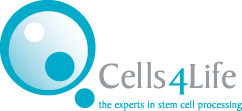In our latest blog, we’re bringing you plenty of user-friendly information about Sickle Cell Disease. What is it, who’s affected by it, and importantly – how could the preservation of stem cells lead the way in finding a cure?
June 19th is World Sickle Cell Day, a day recognised internationally to raise awareness and understanding of sickle cell disease. Established in 2008 by the United Nations, their General Assembly recognised at the time, and clearly still does, that sickle cell disease is a major heath problem on a global scale.
In fact, they referred to this condition as “one of the world’s foremost genetic diseases”. This disorder is particularly ruthless, not least due to its generation-to-generation transmission, inherited by children from their parents, with currently no known cure.
So, What is Sickle Cell Disease?
Sickle cell disease isn’t just a single condition. In effect it’s a syndrome – that is, a group of illnesses – that in this instance affect red blood cells.
What makes sickle cell disease (SCD) of particular note is that it ONLY affects people of African, Caribbean, Middle Eastern, Eastern Mediterranean and Asian descent, and we don’t know why. Its effects vary from person to person, but sadly, it can be serious and life-limiting for many sufferers. In a nutshell, this is a condition that prevents many people from enjoying the everyday things that most of us take for granted.
SCD gets in the way of work, family life, almost everything.
The Causes of Sickle Cell Disease
SCD is caused by a recessive gene that produces unusually shaped red blood cells in the shape of a crescent – hence the word “sickle”.
This means that they are less able to move freely around the body as normal shaped cells. In simple terms, rather than being round and flexible, they’re the wrong shape and stiff, causing blockages. Thus, the result can be tissue and organ damage.
Equally, as you can imagine, these internal “traffic jams” also cause the sufferer a great deal of pain.
We refer to these episodes as “Sickle Cell Crises”; they can be severe and can last up to a week.
Sickle Cell Disease doesn’t always happen. It’s possible, for example for parents to be carriers of the trait without passing it on. And, if they both have the gene, the chance of passing it on is one in four. Still rather high, however.
Effects and Symptoms
Other knock-on effects of SCD include:
- An increased risk of serious infections
- Anaemia – where not enough oxygen transports itself around the body, resulting in extreme tiredness and shortness of breath.
Unfortunately, there is also a risk of stroke, blindness, and bone damage. Also, lung problems, and delayed growth can be serious issues. It’s obvious, perhaps that life expectancy is shorter than average, with sudden fatalities occurring in a proportion of patents.
We don’t wish to overstate this or be alarmist; as with many diseases, there are gradations and scales. Some are badly affected, others, not so much.
Is There a Treatment, Or a Cure?
Yes, and no.
With regret, the outlook for SCD suffers is far from bright should they have a more aggressive form of the disease.
As a chronic condition, there isn’t yet a widely available “cure” within the reach of the population as a whole. Stem cell or bone marrow transplants can treat it, but with the former, the communities affected by this disease are still widely under-represented in bone marrow and cord blood registries. Thus, it’s much harder for families to find an appropriate stem cell match from a public bank.
Ongoing treatment includes self-care, such as strong painkilling medication, antibiotics, drinking plenty of fluids to prevent painful episodes, and so on. More significant interventions may require regular blood transfusions if symptoms continue to get worse.
However, progress has been made. Have a look at this article from 2015, widely reported in the media here.
How Blood Cord Stem Cells Could Help
And now, here at Cells4Life, we hope for some even better news.
Our genes act like a blueprint for our bodies, they tell our cells which proteins to make, and how much. In the case of SCD for example, there is a genetic mutation, which disrupts these instructions. This can cause severe problems. The body has “gone wrong”.
Enter stem cells, our bodies’ building blocks.
These cells can hold the key to a better life for many sufferers of inherited illnesses, such as SCD.
Let us explain how.
They have the potential to self-renew, multiply and divide into many other types of cell. They can become cells of the heart, muscles, brain, blood and skin – all the tissues that add up to what it means to be a human being.
Your Child’s Inheritance Starts at Birth
But, there’s a caveat: it all happens in the delivery room. The placenta and umbilical cord of a new born baby contains millions of these wonder cells. As we grow older and age, they deplete enormously. We have to act fast!
As a stem cell bank, Cells4Life offers your family the chance to break the Sickle Cell Chain.
Harvesting and storing blood cord stem cells immediately after birth could be the key that unlocks a bright, healthy future for your baby, should they have inherited the recessive gene that causes Sickle Cell Disease. Stored in cryogenic conditions, gene therapy could potentially use your offspring’s own stem cells – even after several years – to deliver the CORRECT instructions to the cells that need help.
Thus, the faulty gene could be eliminated permanently, offering the quality of life and greater longevity to your children they truly deserve.
Don’t forget: your baby will automatically be offered screening as part of the new born blood spot test (heel prick test). Wouldn’t it be the most wonderful feeling to know that the means to cure your much-loved child is within your gift?
Is stem cell banking required for a second child?
Yes.
If you are from one of the communities mentioned at the start of this blog, and you want your child to have the best chance of accessing stem cells in the future– most definitely.
Two full siblings have a 25% chance of matching perfectly, there’s a 50% possibility of a half-match and again another 25% chance of not matching at all.
We hope you found this blog useful. Why not request a Welcome Pack, for more information about blood cord stem cells, and how storing them with Cells4Life could be the lift legacy your family deserves?
Request a Welcome Pack
Find out more about cord blood banking by downloading a Welcome Pack now.
If someone you love is affected by Sickle Cell Disease or any other type of haemoglobinopathy, you’ll want to support them as best you can. You can find out more and learn about the great work achieved by the Sickle Cell Society (Charity Number: 1046631) here.
For current information on where you can donate blood, please visit National Health Service Blood and Transplant‘s own website here. Additional information on how the Sickle Cell Society works with black-heritage communities across the country to help treat people with Sickle Cell can be found here.
None of the information on this website pertains to medical advice. For medical advice and support with your healthcare please speak to your designated Healthcare provider.









